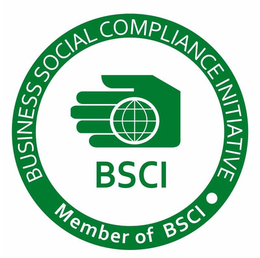The Business Social Compliance Initiative (BSCI) is an important framework aimed at improving working conditions in global supply chains. For companies operating in or sourcing from China, understanding the document checklist for a Corporate Social Responsibility (CSR) audit is crucial. This article provides an overview of the essential documents required during a BSCI audit and their significance in ensuring compliance with social responsibility standards.
## What is BSCI?
BSCI is a leading business-driven initiative that promotes social compliance and ethical labor practices in supply chains. It provides a common framework for companies to assess and improve their social performance in line with international labor standards. The BSCI audit process evaluates a company’s adherence to these standards and identifies areas for improvement.
## Importance of the Document Checklist
The document checklist for a CSR audit serves as a guide for companies to prepare for the audit process. By ensuring that all required documents are in order, businesses can demonstrate their commitment to social responsibility and facilitate a smoother audit experience. Proper documentation can also help identify potential issues before the audit, allowing for corrective actions to be taken in advance.
## Key Documents Required for BSCI Audit
- **Company Profile**: A comprehensive overview of the company, including its structure, ownership, and operational details. This document helps auditors understand the context of the business.
- **Policies and Procedures**: Documentation of the company’s policies regarding labor practices, health and safety, anti-discrimination, and environmental management. These policies should align with the BSCI Code of Conduct.
- **Employee Records**: Records of employee contracts, job descriptions, and work hours. This documentation is essential for verifying compliance with labor laws regarding wages, working hours, and employee benefits.
- **Health and Safety Records**: Documentation related to workplace safety policies, training records, accident reports, and safety audits. This information demonstrates the company’s commitment to maintaining a safe working environment.
- **Training Records**: Evidence of employee training programs related to health and safety, anti-harassment, and other relevant topics. This shows that the company invests in its workforce and promotes a culture of compliance.
- **Grievance Mechanism**: Documentation of the processes in place for employees to report grievances or concerns. This should include records of any complaints received and how they were addressed.
- **Supplier Agreements**: Contracts and agreements with suppliers that outline expectations for social compliance. This is crucial for ensuring that the entire supply chain adheres to BSCI standards.
- **Audit Reports**: Previous audit reports, both internal and external, that provide insight into the company’s social compliance history. These reports can help identify trends and areas needing improvement.
- **Corrective Action Plans**: Documentation of any corrective actions taken in response to previous audit findings, including timelines and responsible parties. This demonstrates the company’s proactive approach to addressing issues.
- **Certificates and Licenses**: Any relevant certifications or licenses that validate compliance with local labor laws and industry standards.
## Conclusion
Preparing for a BSCI audit in China requires careful attention to documentation. The document checklist serves as a roadmap for companies to ensure they meet the necessary social compliance standards. By organizing and maintaining the required documents, businesses can not only facilitate a successful audit but also demonstrate their commitment to ethical practices and social responsibility. Ultimately, this commitment enhances brand reputation, fosters better relationships with stakeholders, and contributes to a more sustainable supply chain.
We have attached Intertek’s audit document checklist for your reference.
Related articles:
*What are BSCI and Sedex, and what are their differences?
*Understanding the Purpose of BSCI Audits for Clients
*Which well-known brands require factories to obtain BSCI certification
*About the latest BSCI certificate and report from Top Jewelry Ltd
*Understanding the BSCI Code of Conduct, Principles, and Differences with SA8000
*How Much Does BSCI Certification Cost and How to Apply for It?
*Understanding How BSCI Auditors Conduct On-Site Audits in Factories (amfori BSCI Audit Plan)

